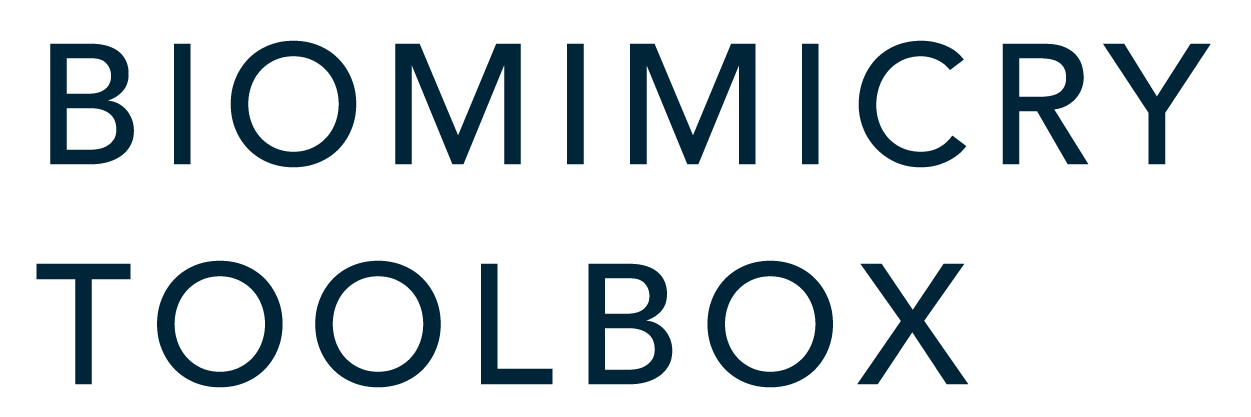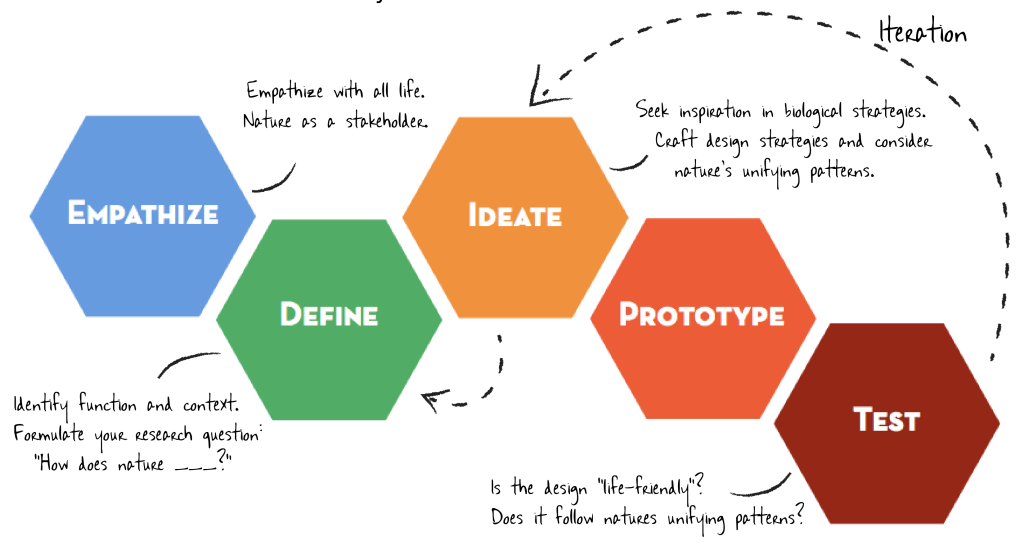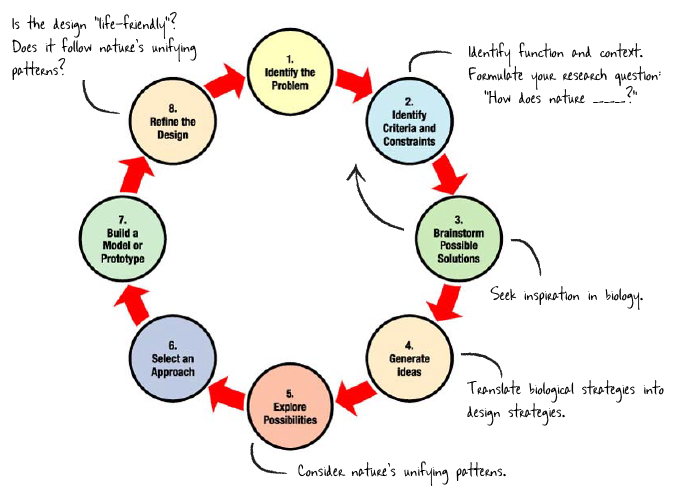Biomimicry and Other Design Processes
Biomimicry concepts and tools can be utilized within a variety of design processes. Now that you have a sense for what a biomimetic approach looks like, let’s consider how some of the concepts and tools of biomimicry can be integrated into other design frameworks, by looking at two that are widely used in design and engineering.
Design Thinking
Design Thinking is an empathic, human-centered approach to innovation that has become prominent in design and business circles in recent decades. In the image below we have modified a Design Thinking diagram used by the Hasso Plattner Institute for Design (aka “d.School”) at Stanford University, to show how biomimicry concepts can fit into the framework.
Click to enlarge image and text. If you are not already familiar with the Design Thinking approach, you can learn more about it on the d.School’s website.
Whereas design thinking emphasizes beginning the design process with empathy for users, in a biomimetic concept we could extend that concern to include all life. During the “define” step one would identify the function and context necessary for the solution and formulate questions for biology research. The “ideate” step then includes searching biology for inspiration, translating strategies and considering nature’s unifying patterns. And finally, the “test” step includes evaluating whether the resulting design is ultimately life-friendly.
Engineering Design
The next figure shows an Engineering Design process diagram provided by NASA as resource for educators teaching Engineering Design. Here we have again modified the diagram to illustrate how biomimicry concepts can be integrated.
As you can see, step two integrates defining the function and context of the solution, steps 3-5 include asking searching biology for inspiration, translating strategies, and considering nature’s unifying patterns. And finally the 8th step requires evaluating whether the resulting design is ultimately life-friendly.
As we noted before, there really isn’t one definitive way to practice biomimicry. The tools and processes described in this Toolkit offer different paths and techniques that can help guide you in your efforts to design in a way that creates solutions for a healthy planet. Use them to develop your own path to truly sustainable design.
Image Credits
Design Thinking diagram: Hasso Plattner Institute of Design at Standford
Engineering Design diagram: NASA Education




